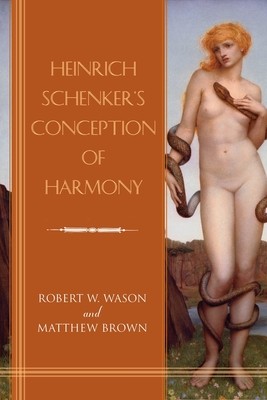
- We will send in 10–14 business days.
- Author: Robert W Wason
- Publisher: University of Rochester Press
- ISBN-10: 1580465757
- ISBN-13: 9781580465755
- Format: 15.2 x 22.9 x 2.9 cm, kieti viršeliai
- Language: English
- SAVE -10% with code: EXTRA
Reviews
Description
The first detailed study of Schenker's pathbreaking 1906 treatise, showing how it reflected 2500 years of thinking about harmony and presented a vigorous reaction to Austro-Germanic music theory ca. 1900.
What makes the compositions of Handel, Bach, Haydn, Mozart, Beethoven, Schubert, Schumann, Chopin, and Brahms stand out as great works of art? Heinrich Schenker (1868-1935) set out to answer this question in a series of treatises, beginning with a strikingly original work with the deceptive title Harmonielehre (roughly: Treatise on Harmony, 1906). Whereas other treatises of the period associated harmony with the abstract principles governing chords and chord progressions, Schenker's treated it as the conceptual glue that allowed the individual elements of a work (melodies, motives, chords, counterpoint, etc.) to work together locally and globally. Yet this book, though renowned and much cited, has never been studied systematically and in close detail. Heinrich Schenker's Conception of Harmony approaches Schenker's 1906 treatise as a synthesis of ancient ideas and very new ones. It translates, for the first time, two preparatory essays for Harmonielehre and describes his later views of harmony and the ways in which they influenced and also were ignored by the 1954 edition and translation, entitled simply Harmony. Though problematic, Harmony was the first published translation of a major work by Schenker, inaugurating the study of his writings in postwar America and Britain, where they continue to be highly influential.EXTRA 10 % discount with code: EXTRA
The promotion ends in 23d.04:32:16
The discount code is valid when purchasing from 10 €. Discounts do not stack.
- Author: Robert W Wason
- Publisher: University of Rochester Press
- ISBN-10: 1580465757
- ISBN-13: 9781580465755
- Format: 15.2 x 22.9 x 2.9 cm, kieti viršeliai
- Language: English English
The first detailed study of Schenker's pathbreaking 1906 treatise, showing how it reflected 2500 years of thinking about harmony and presented a vigorous reaction to Austro-Germanic music theory ca. 1900.
What makes the compositions of Handel, Bach, Haydn, Mozart, Beethoven, Schubert, Schumann, Chopin, and Brahms stand out as great works of art? Heinrich Schenker (1868-1935) set out to answer this question in a series of treatises, beginning with a strikingly original work with the deceptive title Harmonielehre (roughly: Treatise on Harmony, 1906). Whereas other treatises of the period associated harmony with the abstract principles governing chords and chord progressions, Schenker's treated it as the conceptual glue that allowed the individual elements of a work (melodies, motives, chords, counterpoint, etc.) to work together locally and globally. Yet this book, though renowned and much cited, has never been studied systematically and in close detail. Heinrich Schenker's Conception of Harmony approaches Schenker's 1906 treatise as a synthesis of ancient ideas and very new ones. It translates, for the first time, two preparatory essays for Harmonielehre and describes his later views of harmony and the ways in which they influenced and also were ignored by the 1954 edition and translation, entitled simply Harmony. Though problematic, Harmony was the first published translation of a major work by Schenker, inaugurating the study of his writings in postwar America and Britain, where they continue to be highly influential.

Reviews